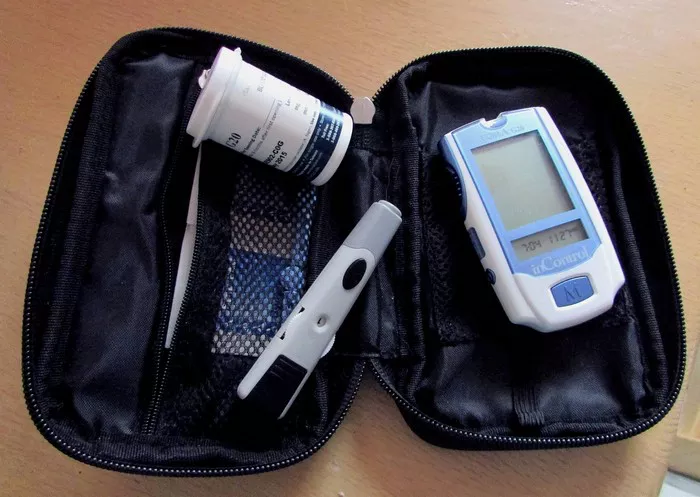Type 1 diabetes is a chronic condition characterized by the body’s inability to produce insulin, a hormone crucial for regulating blood glucose levels. Unlike type 2 diabetes, which is primarily related to insulin resistance and lifestyle factors, type 1 diabetes is an autoimmune disorder that typically manifests early in life. This article provides an in-depth look at the nature of type 1 diabetes, its causes, symptoms, diagnosis, treatment, and ongoing management strategies.
Understanding Type 1 Diabetes
What Is Type 1 Diabetes?
Type 1 diabetes (T1D) is an autoimmune condition in which the body’s immune system mistakenly attacks and destroys the insulin-producing beta cells in the pancreas. This results in an absolute deficiency of insulin, a hormone necessary for allowing glucose to enter cells from the bloodstream. Without insulin, blood glucose levels rise, leading to hyperglycemia and various health complications.
The Role of Insulin
Insulin is a hormone produced by the beta cells of the pancreas. Its primary function is to regulate blood glucose levels by facilitating the uptake of glucose into cells for energy production. In a healthy individual, insulin ensures that blood glucose levels remain within a narrow, healthy range. In type 1 diabetes, the destruction of beta cells means that insulin production is severely impaired or completely absent.
Causes and Risk Factors
Autoimmune Response
The precise cause of the autoimmune response leading to type 1 diabetes is not entirely understood. However, it is believed that genetic and environmental factors contribute to the development of the disease. The immune system attacks the beta cells in the pancreas, which leads to their destruction and results in the loss of insulin production.
Genetic Factors
Genetics play a significant role in the predisposition to type 1 diabetes. Certain genetic markers, particularly those related to the major histocompatibility complex (MHC) and specific gene variants, are associated with an increased risk of developing T1D. While having these genetic markers does not guarantee that an individual will develop diabetes, it increases the likelihood.
Environmental Triggers
Several environmental factors may trigger the autoimmune response in genetically predisposed individuals. These can include:
Viral Infections: Certain viruses, such as enteroviruses, have been linked to an increased risk of type 1 diabetes. The immune system’s response to these infections may inadvertently damage beta cells in the pancreas.
Dietary Factors: There is some evidence suggesting that early exposure to cow’s milk or other dietary factors might influence the development of T1D, although the relationship is not fully established.
Symptoms of Type 1 Diabetes
Type 1 diabetes often develops rapidly and can present with a range of symptoms. Common symptoms include:
Classic Symptoms
Polyuria: Increased urination due to the kidneys’ effort to eliminate excess glucose from the bloodstream.
Polydipsia: Excessive thirst resulting from fluid loss due to polyuria.
Polyphagia: Increased hunger as cells are unable to access glucose for energy.
Weight Loss: Despite increased appetite, weight loss can occur due to the body’s inability to use glucose effectively and the breakdown of fat and muscle for energy.
Fatigue: Persistent tiredness due to insufficient glucose reaching the body’s cells.
Additional Symptoms
Blurred Vision: High blood glucose levels can cause fluid to shift into and out of the eye lenses, leading to blurred vision.
Ketoacidosis: A serious condition where the body breaks down fat at an accelerated rate, leading to the accumulation of ketones in the blood and urine, which can result in nausea, vomiting, abdominal pain, and a fruity odor on the breath. Diabetic ketoacidosis (DKA) is a medical emergency requiring immediate treatment.
Diagnosis of Type 1 Diabetes
Diagnostic Criteria
The diagnosis of type 1 diabetes is based on several tests that measure blood glucose levels and assess the presence of autoantibodies. Key diagnostic tests include:
Fasting Blood Glucose Test: Measures blood glucose levels after fasting for at least 8 hours. A fasting blood glucose level of 126 mg/dL (7.0 mmol/L) or higher is indicative of diabetes.
Oral Glucose Tolerance Test (OGTT): Measures blood glucose levels before and 2 hours after consuming a glucose-rich beverage. A 2-hour blood glucose level of 200 mg/dL (11.1 mmol/L) or higher suggests diabetes.
Hemoglobin A1c Test: Reflects average blood glucose levels over the past 2 to 3 months. An A1c level of 6.5% or higher indicates diabetes.
Autoantibody Testing: Identifies specific antibodies (e.g., GAD65, IA-2) that are present in many people with type 1 diabetes, confirming the autoimmune nature of the disease.
Differential Diagnosis
It is important to differentiate type 1 diabetes from other forms of diabetes, such as type 2 diabetes and monogenic diabetes. This can involve assessing age of onset, the presence of autoantibodies, and the pattern of blood glucose abnormalities.
Treatment and Management
Insulin Therapy
Since individuals with type 1 diabetes produce little to no insulin, insulin therapy is the cornerstone of treatment. Insulin can be administered through several methods:
Multiple Daily Injections (MDI): Involves injecting insulin several times a day using syringes or insulin pens. This typically includes a combination of rapid-acting and long-acting insulin to manage blood glucose levels throughout the day.
Insulin Pump Therapy: Uses a small device that delivers a continuous supply of insulin through a catheter placed under the skin. Insulin pumps allow for precise control of insulin delivery and can be programmed to adjust insulin rates based on different times of the day or specific needs.
Blood Glucose Monitoring
Regular monitoring of blood glucose levels is essential for managing type 1 diabetes effectively. Methods include:
Self-Monitoring of Blood Glucose (SMBG): Involves using a glucose meter to check blood glucose levels multiple times a day. This helps individuals adjust their insulin doses and manage their diet and activity levels.
Continuous Glucose Monitoring (CGM): A device that measures glucose levels continuously throughout the day and night via a sensor placed under the skin. CGMs provide real-time glucose readings and alerts for high or low glucose levels, allowing for more precise management.
Dietary Management
A balanced diet plays a critical role in managing type 1 diabetes. Key aspects of dietary management include:
Carbohydrate Counting: Helps individuals determine how much insulin is needed based on the carbohydrate content of their meals.
Balanced Meals: Incorporating a variety of nutrients, including proteins, fats, and carbohydrates, can help maintain stable blood glucose levels and overall health.
Regular Meals and Snacks: Consistent meal timing and spacing can help manage blood glucose levels and prevent extreme highs or lows.
Physical Activity
Regular physical activity is beneficial for overall health and can help with blood glucose control. Exercise can improve insulin sensitivity and aid in the management of blood glucose levels. Individuals with type 1 diabetes should work with their healthcare team to develop an exercise plan that considers their insulin regimen and blood glucose monitoring.
Psychological Support
Living with type 1 diabetes can be emotionally challenging. Psychological support, including counseling and diabetes education, can help individuals cope with the stress and demands of managing the condition. Support from family, friends, and diabetes support groups can also be valuable.
Complications of Type 1 Diabetes
Short-Term Complications
Diabetic Ketoacidosis (DKA): A serious condition that occurs when the body produces high levels of ketones, leading to metabolic acidosis. DKA requires immediate medical treatment to correct blood glucose and electrolyte imbalances.
Hypoglycemia: Low blood glucose levels can result in symptoms such as shakiness, sweating, confusion, and, in severe cases, loss of consciousness. Hypoglycemia can be caused by an overdose of insulin, missed meals, or excessive physical activity.
Long-Term Complications
Cardiovascular Disease: Increased risk of heart disease and stroke due to damage to blood vessels and nerves.
Neuropathy: Nerve damage that can lead to pain, numbness, and other sensory or motor issues.
Retinopathy: Damage to the retina that can result in vision problems or blindness.
Nephropathy: Kidney damage that can lead to chronic kidney disease or kidney failure.
Advances in Type 1 Diabetes Research
Emerging Therapies
Research is ongoing to improve the management of type 1 diabetes and to find potential cures. Key areas of research include:
Artificial Pancreas Systems: These systems combine continuous glucose monitoring with insulin pumps to automate insulin delivery and improve blood glucose control.
Immunotherapy: Investigating treatments that could modify the immune system’s response to prevent or delay the onset of type 1 diabetes.
Beta Cell Regeneration: Exploring methods to regenerate or replace the insulin-producing beta cells in the pancreas.
Innovations in Technology
Advanced Insulin Delivery Systems: Innovations such as smart insulin pens and automated insulin delivery systems aim to enhance precision and ease of insulin administration.
Wearable Technology: New devices and applications are being developed to provide real-time data and insights into blood glucose levels, improving overall diabetes management.
See also: What Causes Type 1 Diabetes in Young Adults?
Conclusion
Type 1 diabetes is a complex and challenging condition that requires lifelong management and attention. Understanding the nature of type 1 diabetes, its causes, symptoms, and treatment options is crucial for effectively managing the disease and improving quality of life. With ongoing advancements in research and technology, individuals with type 1 diabetes have access to increasingly sophisticated tools and treatments that can enhance their ability to manage blood glucose levels and reduce the risk of complications. By staying informed and proactive, individuals with type 1 diabetes can navigate the challenges of the condition and work towards achieving optimal health and well-being.
Related topics:
What Causes Type 1 Diabetes to Develop?


























